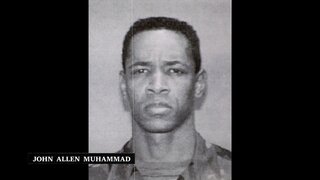Create a free profile to get unlimited access to exclusive videos, breaking news, sweepstakes, and more!
Why Did Serial Killer Richard Rogers Dismember Gay Men? A Forensic Psychologist Weighs In

Richard W. Rogers was a mild-mannered, quiet nurse who kept a neat house in the New York City borough of Staten Island. He appeared to be leading a normal life, especially to neighbors who described him as kind — until he was arrested in 2001 for a string of gruesome murders in the early ’90s that the media had attributed to “The Last Call Killer.”
Rogers was given that moniker because his victims were gay men he picked up from bars. They ended up dismembered in body bags with their joints disarticulated with all of the precision Rogers’ decades-long career in surgery had gained him.
Examining the bodies of these victims were important to figuring out the motivations behind the murders, as we find out in “Mark of a Killer,” streaming now on Oxygen.com.
Casey Jordan, a forensic psychologist, weighs in on how one identifies a mark.
“With the first victim, it was really unclear — was this a frenzy, was it disorganized, was it a calling card?”
A dismembered body belonging to computer salesman Thomas Mulcahy, who was seen at the Townhouse Bar, an upscale establishment frequented by gay men, set off the investigation. Mulcahy had been stabbed to death, the New York Post reports, before his body was cut into pieces and stowed in bags alongside two highway rest areas in New Jersey.
Authorities couldn’t find any conclusive evidence pointing them to a suspect.
But a year later, Anthony Marrero, a sex worker who used to pick up clients from the Port Authority Bus Terminal in New York, was found in trash bags in Ocean County, New Jersey.
“That’s when you know it’s intentional,” said Jordan. “If this were just a dismemberment, the odds would be very good that the cutting of the body was just a practical measure to get rid of it.”
But Rogers did more than just cut up the body. He “disarticulated” it — he separated the bones carefully at the joints.
“Somebody who takes the time to insert a knife into a joint and crack the bones in a particular way…in a ritualistic fashion — it’s serving a very personal need that they have.”
Understanding the ritual is important in understanding serial killers.
“Some serial killers have a ritual in mind that they expect to carry out on their victims — a mark,” explained Jordan. “He was unable to refrain from this methodical, putting in the bags, double knotting the bags.”
The method of killing was not so much the mark of Rogers as the disposal, in other words.
“The killer is leaving the body parts where they will be found, thumbing their nose at the police, and basically saying, you can’t find me.”
Rogers didn’t just start killing in the early ‘90s, though. He was acquitted of killing his roommate, who he said made a pass at him and then tried to hurt him with a hammer.
He also was connected to the cold case of Peter Anderson, who was found in a body bag alongside the turnpike in Lancaster County, Pennsylvania in 1991.
Anderson was not dismembered, but he was mutilated. His penis was found in his throat during examination.
“There are phases, almost an evolution to a serial killer,” explained Casey Jordan. “I believe the killer had experienced a sexual thrill, no doubt, from the castration of his first victim that made him curious about his sadistic capabilities — so that with his next victim he would take that knife and begin a disarticulation to find out if this gave him the same sexual thrill.”
“Mark of a Killer” examines the MO of the serial killer through cases and expertise on Oxygen.
[Photo: Mugshot, Oxygen Screengrab]

















